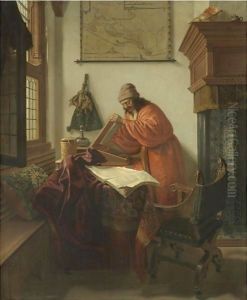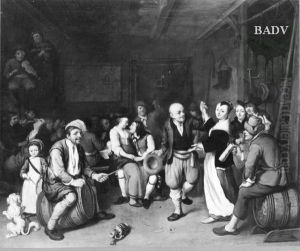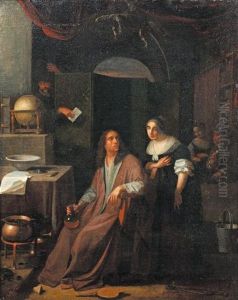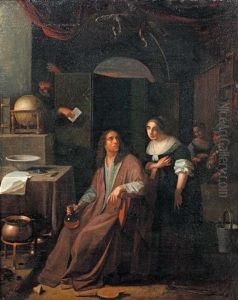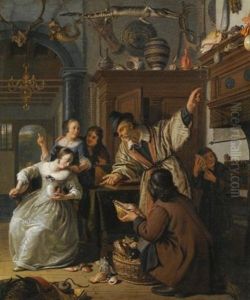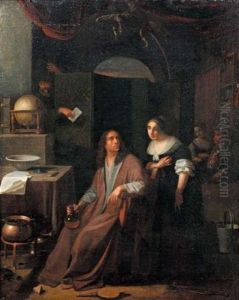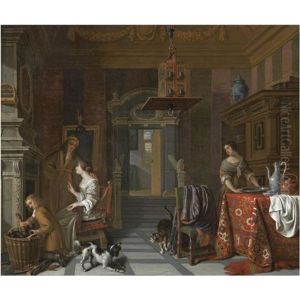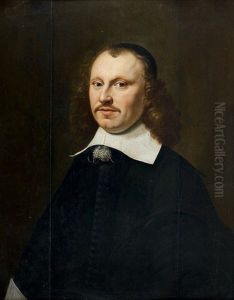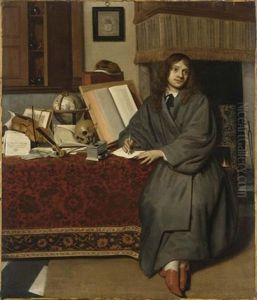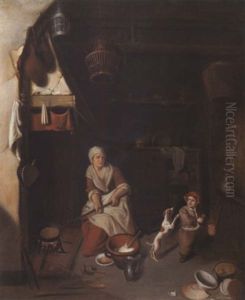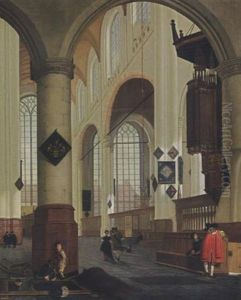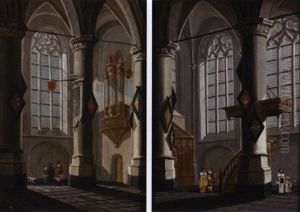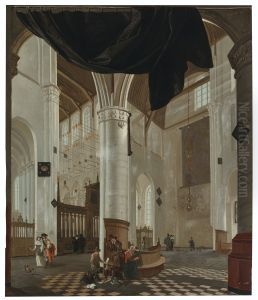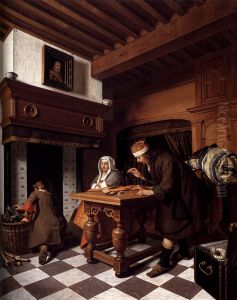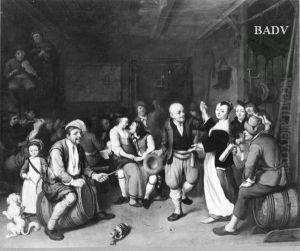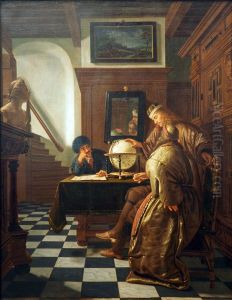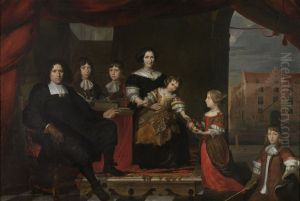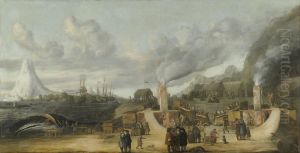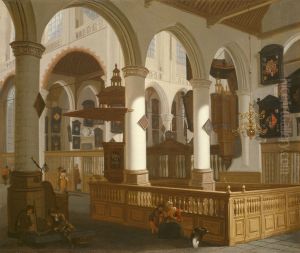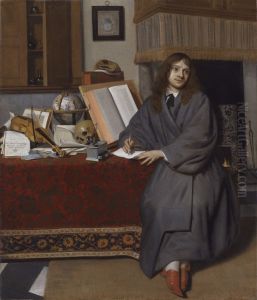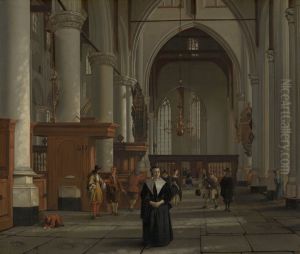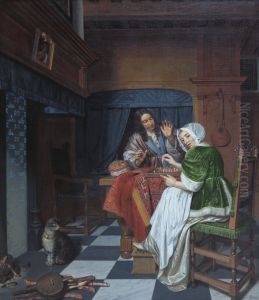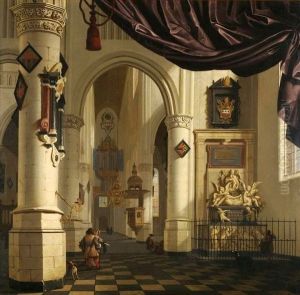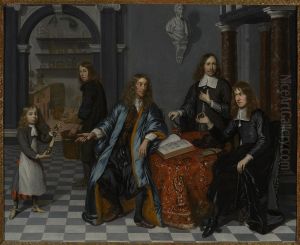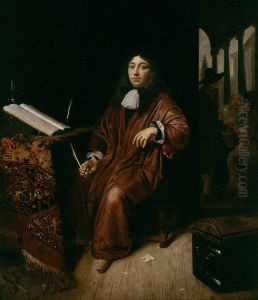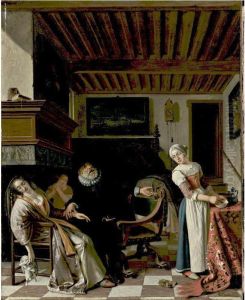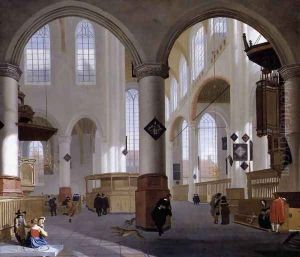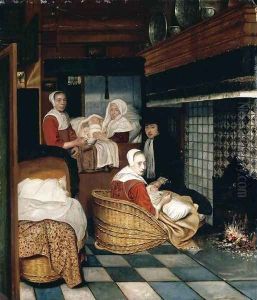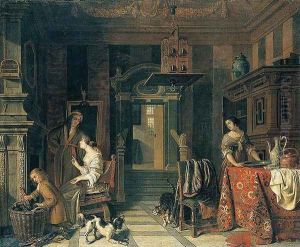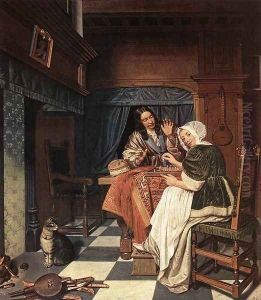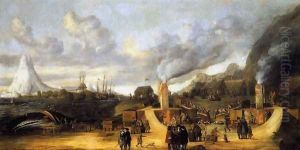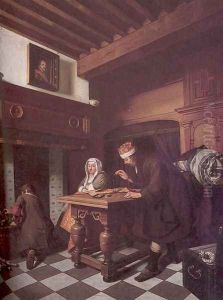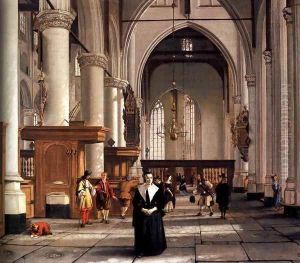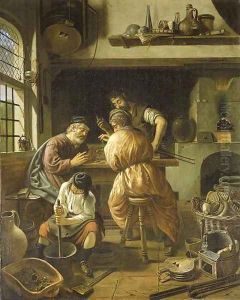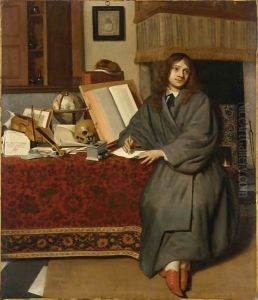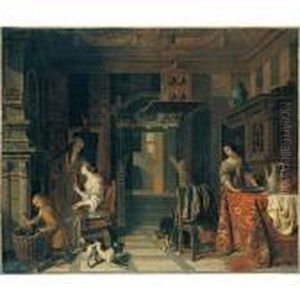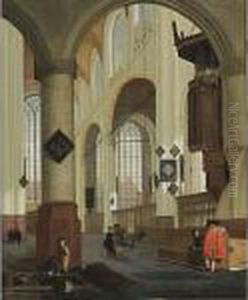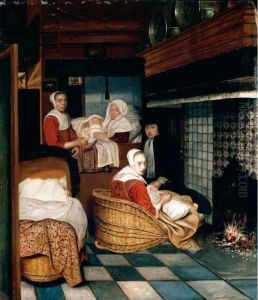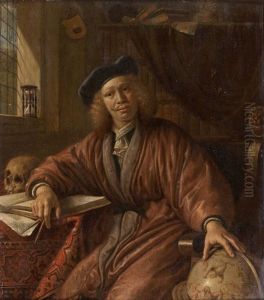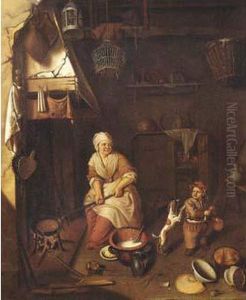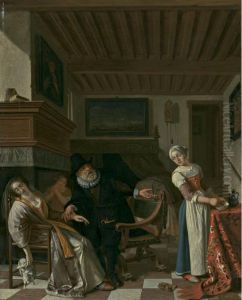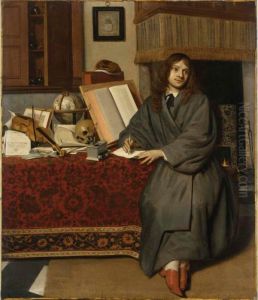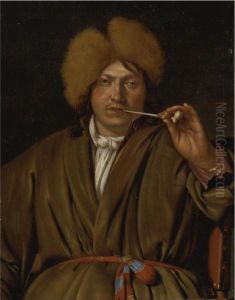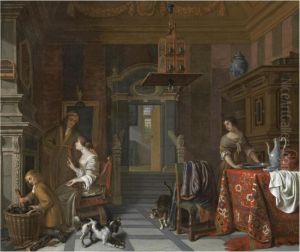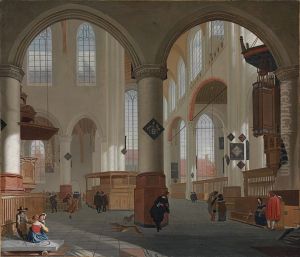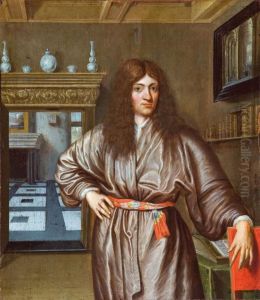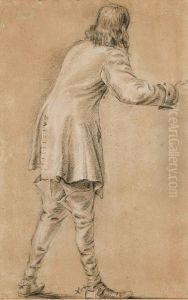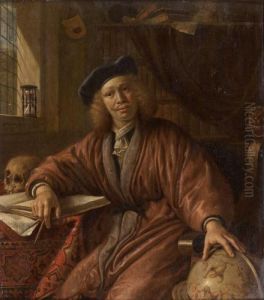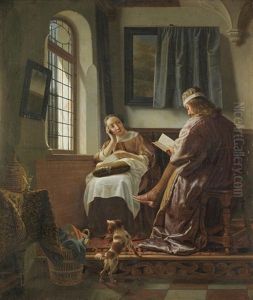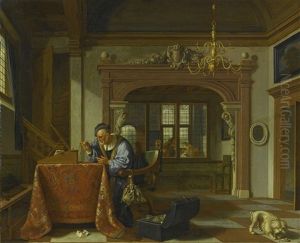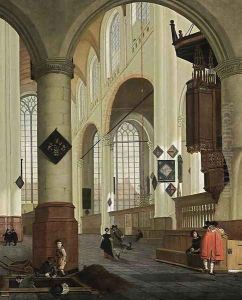Cornelis De Man Paintings
Cornelis de Man was a Dutch Golden Age painter, born in Delft in 1621. He was known for his works that depicted scenes of daily life, portraits, and church interiors. De Man was a versatile painter, and his oeuvre includes genre scenes, historical paintings, and still lifes. He was a contemporary of famous Dutch artists such as Johannes Vermeer and was influenced by the works of Rembrandt and other Dutch masters.
De Man received his artistic training in his hometown of Delft, where he became a member of the local Guild of Saint Luke, a common practice for painters of the time to establish themselves professionally. Throughout his career, he remained active in the Delft painters' guild and even served as its headman for a period.
While not as well-known as some of his contemporaries, Cornelis de Man's works are characterized by their meticulous detail and use of light, which reflect the artistic trends of the Dutch Golden Age. His paintings often included figures engaged in various occupations, showcasing the societal roles and daily activities of the 17th century Dutch people. He also painted church interiors, which were a popular subject in Dutch art due to the Protestant Reformation's influence on the country's religious landscape.
De Man's artistic output was not limited to painting; he also engaged in printmaking. His prints, like his paintings, demonstrate a high level of skill and attention to detail. In addition to his artistic pursuits, Cornelis de Man was also involved in the local community and held a position in the Delft civil guard.
The artist's death occurred in Delft in 1706. Although his works may not have achieved the same level of fame as some of his contemporaries, Cornelis de Man remains a respected figure within the history of Dutch art for his contributions to the painting traditions of the Golden Age. His works can still be seen in museums and collections around the world, offering insight into the life and times of 17th century Netherlands.
